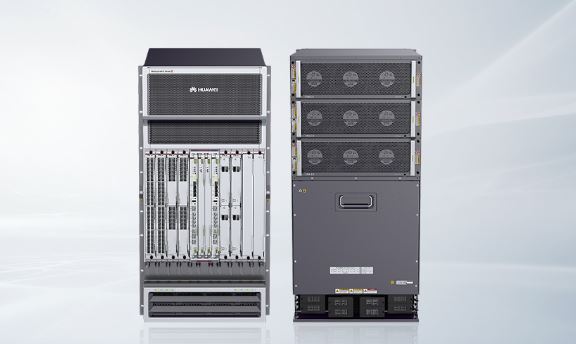Setting up a home router is crucial for ensuring reliable internet access and network security across all your devices. Whether you're working remotely, streaming content, or gaming, having a properly configured router enhances your online experience. This guide will walk you through the essential steps of setting up your home router, while also touching on how advanced routers, such as the NetEngine 40E Series Routers, are designed for larger enterprise or data center environments, offering insights for those interested in upgrading their network infrastructure.

Steps to Setup Your Home Router
Here are steps to set up your home router:
Unboxing and Hardware Setup
Start by unboxing your router and ensuring all components are present, including the power adapter, Ethernet cables, and documentation. Position the router in a central location within your home to ensure even coverage across all areas. Avoid placing it near walls or metal objects that might obstruct the signal. Connect the router’s WAN (Wide Area Network) port to your modem using an Ethernet cable. This connection allows your router to receive the internet signal from your ISP (Internet Service Provider). Once connected, plug in the power adapter and switch the router on. Wait for the LED lights to stabilize, signaling that the router is ready for configuration.
Accessing the Router’s Web Interface
With the router powered on and connected to the modem, you can now access its configuration settings through a web interface. To do this, connect your device to the router via Wi-Fi or Ethernet. Open a web browser and enter the router's IP address into the address bar. The most common IP addresses for home routers are 192.168.1.1 or 192.168.0.1. If these do not work, consult the router’s manual for the correct address. Once you enter the IP, you'll be prompted to log in with a username and password. Most routers use a default login of admin for both fields, but if you’ve changed the credentials, use the new ones.
Configuring Basic Settings
Once logged into the router’s interface, begin configuring basic settings like Wi-Fi, security, and network name. Navigate to the Wireless or Wi-Fi section, where you can set up your network name (SSID). Make sure the name is unique and easily recognizable. It’s also important to set a strong Wi-Fi password combining letters, numbers, and symbols for better security. In addition, changing the default admin login credentials is essential for securing the router from unauthorized access.
Setting Up Port Forwarding and QoS
For those interested in optimizing network performance, especially for gaming or video streaming, setting up port forwarding and Quality of Service (QoS) is beneficial. Port forwarding allows specific traffic to reach certain devices on the network. If you are hosting a game server or need external access to a device, you can configure port forwarding by entering the device's IP address and port range in the router’s settings.
QoS, on the other hand, helps prioritize certain types of network traffic, ensuring that high-priority tasks, such as gaming or video conferencing, receive sufficient bandwidth. This can be particularly useful when multiple devices are connected and competing for bandwidth.
Updating Router Firmware
Check for firmware updates within the router’s settings interface. Most routers will display a notification if a new update is available. Follow the on-screen instructions to download and install the update.

Testing and Troubleshooting
If you notice slow speeds or connectivity issues, try restarting the router. A simple reboot can resolve many minor problems. Additionally, check for potential sources of interference, such as microwaves or cordless phones, which can disrupt Wi-Fi signals. If necessary, adjust the router’s placement to reduce interference and improve signal strength.
Conclusion
Setting up your home Routers is an important task that ensures your network is both secure and efficient. By following these steps, you can optimize your network for better performance and security. If you're looking for more advanced network configurations or higher performance, enterprise NetEngine 40E Series Routers provide advanced features suitable for large businesses or data center environments.






Leave a Reply